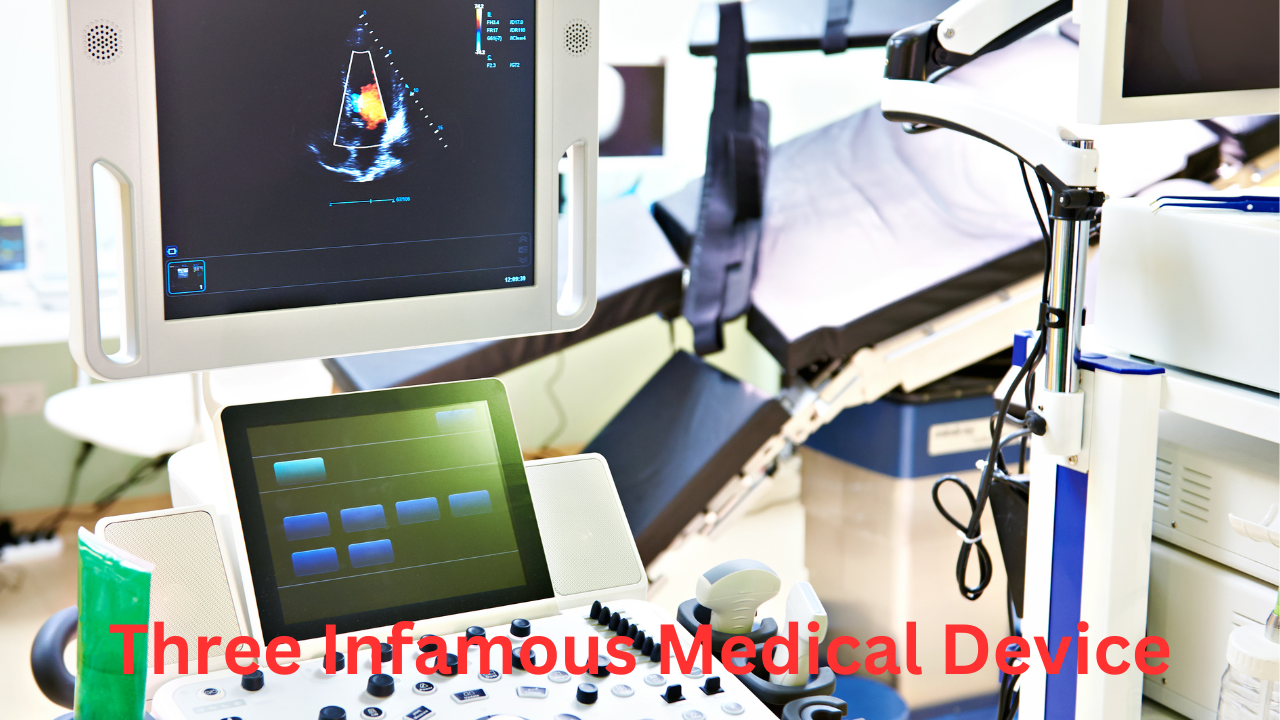Three Infamous Medical Devices
Medical devices play a crucial role in modern healthcare, assisting healthcare professionals in diagnosing, treating, and monitoring various medical conditions. However, there are instances where these devices can malfunction, leading to serious health risks for patients.
As underscored by the Medical Device and Diagnostic Industry, the landscape of device recalls in the United States has witnessed a troubling evolution. In 2022 alone, the FDA issued recalls for nearly 900 medical devices- an alarming surge of 125% from 2012. Among these recalls, 70 were classified as Class I, signifying the gravest concerns. Concurrently, adverse event reports have soared by a staggering 505% over the same period.
Against this backdrop, the FDA remains steadfast in its mandate to uphold the safety and efficacy of medical devices. It stands as a sentinel in safeguarding public health.
Now, let’s explore a journey through three notable medical device recalls that have reshaped the landscape of healthcare in the United States.
DePuy Hip Replacement (2010)
In 2010, DePuy Orthopaedics, a subsidiary of Johnson & Johnson, issued a recall for its ASR XL Acetabular and Hip Resurfacing System. Alarming reports of a higher-than-anticipated failure rate prompted this action.
These hip implants were initially heralded as breakthrough solutions, promising enhanced mobility and reduced pain for individuals grappling with hip complications. However, emerging data revealed a troubling trend: metal particles were shedding into the surrounding tissue, triggering painful inflammation. In severe cases, this led to metal poisoning, known as metallosis.
The National Joint Registry of England and Wales revealed that 13% of patients with the XL Acetabular implant required revision surgery within five years. Similarly, 12% of patients with the Hip Resurfacing implant needed such intervention- a stark contrast to the expected 15-year lifespan for most hip implants.
Despite initial assertions from DePuy indicating lower revision rates, investigative journalists uncovered evidence suggesting the company was aware of the high failure rates. Lawsuits further revealed that this knowledge existed more than a year before the recall.
With over 93,000 individuals worldwide and 30,000 in the US implanted with these devices, the repercussions were widespread.
While DePuy pledged to cover monitoring and treatment costs associated with the recall, media reports suggested that some claims for medical expenses were denied. Ultimately, Johnson & Johnson settled thousands of lawsuits related to ASR hip implants for a staggering $4 billion in 2013, as per Drugwatch.
Philips CPAP and BiPAP Devices (2021)
In 2021, Philips, renowned for its CPAP and BiPAP devices, issued a sweeping recall affecting around 15 million units due to potential health hazards. According to The New York Times, the recall stemmed from the discovery of risks associated with the sound abatement foam in the devices.
This foam could deteriorate and release harmful particles into the air pathway, posing risks of respiratory issues, irritation, inflammation, or toxicity.
This recall impacted a substantial number of patients worldwide reliant on CPAP and BiPAP therapy for managing sleep apnea and respiratory conditions. With immediate replacements unavailable, the recall sparked confusion and concern among doctors and patients alike. They grappled with the dilemma of continued device use versus compromised breathing during sleep.
In response to the fallout, Philips Respironics reached a partial $479 million settlement in September 2023, aiming to address financial damages incurred by affected individuals.
However, the repercussions of the recall extended beyond financial compensation, as evidenced by the ongoing Philips CPAP lawsuit. As of April 2024, there are 762 pending lawsuits in multidistrict litigation. These cases underscore the enduring fallout and the complexities of resolving injury claims linked to the recalled Philips CPAP machines.
TorHoerman Law estimates settlement amounts ranging from $50,000 to over $500,000, highlighting the far-reaching consequences and ongoing legal battles surrounding this critical issue.
Cardiosave Hybrid and Rescue Intra-Aortic Balloon Pumps(2023)
The recent Class I recall of the Cardiosave Hybrid and Rescue Intra-aortic Balloon Pumps (IABPs) has sent ripples through the medical community.
Designed to inflate and deflate intra-aortic balloons synchronously with the cardiac cycle, these electromechanical systems play a key role. They stabilize patients with acute coronary syndrome, undergoing cardiac surgeries, or experiencing heart failure complications.
However, the recall, initiated on June 5, 2023, was due to failures in the printed circuit board assembly (PCBA). These failures could lead to unexpected shutdowns, underscoring the potential risks associated with device malfunctions.
The prospect of unstable blood pressure, compromised organ perfusion, and even death underscores the urgent need for vigilance. Adherence to corrective measures outlined by Datascope is crucial in mitigating these risks.
Notably, 4,586 such devices were distributed in the US between March 6, 2012, and May 19, 2023, as reported by the FDA. Healthcare providers and patients must remain vigilant to ensure proper device usage and adherence to manufacturer recommendations, mitigating adverse events and safeguarding patient outcomes.
FAQs
What prompted the Philips CPAP Lawsuit?
The lawsuit was prompted by Philips’ recall of millions of CPAP and BiPAP machines in 2021. It was due to the potential health risks associated with the degradation of sound abatement foam used in the devices. This degradation could release harmful particles into the air pathway.
What types of damages can be sought in the lawsuit?
Damages sought in the lawsuit may include compensation for medical expenses and lost wages. Additionally, plaintiffs may seek damages for pain and suffering and other related costs incurred due to using the defective CPAP devices.
How do I join the Philips CPAP Lawsuit?
Individuals interested in joining the lawsuit should contact a qualified attorney specializing in product liability or medical device litigation. They can discuss their options for seeking legal representation and pursuing compensation.
In conclusion, medical device recalls serve as critical reminders of the importance of stringent regulatory oversight and comprehensive testing. Ongoing monitoring of medical devices is essential to ensure their safety and effectiveness.
While these recalls have undoubtedly impacted patients, healthcare providers, and manufacturers, they have also led to improvements in regulatory processes and product design. Quality control measures have been enhanced to prevent similar issues in the future.
As technology advances and new medical devices emerge, it remains imperative to prioritize patient safety and vigilantly address any concerns that may arise.




